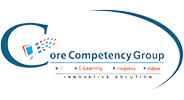Critical Business Metrics for HR
Rohit Kumar
23 Aug, 2023

Understand their role in strategic decision-making, identify the best metric for any objective, and transform mere data into insightful action.
Read our comprehensive guide here URL
#HRMetrics #HumanCapitalAnalytics #HR #TalentManagement
This article lists proposed metrics for each of the HR functional areas. However, it's essential to understand several key points about the application of metrics in HR and Human Capital management.
First, metrics are genuinely beneficial when they form a basis for analysis. However, you should not use them in isolation for any purpose except compliance reporting, and even in this case, we recommend a comprehensive analysis of the data accompanying the report to ensure a fuller understanding.
Using simple statistical methods, carrying out dimensional segmentation, or comparing one metric with another or a target or benchmark, is enough to turn metrics into analytics and data into insight. It is this insight that brings value, not the metric itself. Mere reporting is inadequate and a complete waste of time. The analysis is not only necessary but also critical.
Second, the primary purpose of analytics is to aid and enhance decision-making. Therefore, any metric that does not result in an action is not worth the time and effort to compute and report.
Many HR departments produce excessive data and information but offer little insight to achieve this central purpose. Less is more when it's about metrics and analytics.
Third, determine the right audience for each metric. Many metrics benefit those responsible for managing an HR process because they offer insights into opportunities for process improvement.
However, these metrics may not be helpful or essential to the management. Other metrics successfully highlight risks to organizational success and therefore offer valuable insight to your executive team. Avoid wasting time with metrics or analytics that are not relevant to their duties and decisions.
Fourth, there's no single defined desired outcome for most metrics. Instead, organizations need to establish expected results or targets for metrics that align with the organization's strategy, goals, and objectives. The target must be such that it reasonably leads to organizational success.
Last, recognizing the few analytics that links Human Capital management to organizational strategy and primary goals and objectives is critical to making metrics meaningful to your organization.
Strategic Management
Break‐even Point
This is the juncture where the capital invested into initiating or enhancing an HR program equals or surpasses the benefits reaped. When the returns match the investments, the break-even point has been attained.
Formula
Development cost/Annual return
Cost‐Benefit Ratio
This evaluates how a program or activity's advantages correlate with the expenses related to its establishment and execution.
It's crucial to be explicit about what has been incorporated when you estimate costs for any HR initiative. In this context, we have considered the wage plus benefits of a newly appointed program lead and the services of a consultant to aid in the design of the new program and bring about the required alterations to our HRIS to identify Successor and High Potential. In addition, we have excluded the cost of managers' and HRBPs' participation in the program.
ROI (Return on Investment)
This refers to the financial gain a company receives from its monetary investment in a new program or activity or modifications to a pre-existing program or activity. There are multiple ways to measure ROI. If your company has a designated formula, stick to it. If not, a general formula can be applied to most scenarios.
Predicted benefits can be deduced by observing possible decreases in the program's administrative and delivery expenses (for example, lower vendor charges, less staff required for administration), improvements in productivity, or cost reductions facilitated by the program's methodology or another facet (such as minimizing time off work and cutting down travel costs by transitioning a program online), and improved results (like reducing turnover and employee relation problems, and boosting employee productivity with a particular leadership program). Aim to quantify these benefits as accurately as you can.
Both costs and benefits must be calculated over a period that accurately reflects the program's expected duration.
A comprehensive ROI analysis should also emphasize benefits that cannot be converted into monetary terms but represent intended results.
Formula
((Anticipated Benefits – Total Development Cost of Program)/ Total Development Cost of Program) x 100
HR Management
HR Expense to Revenue Ratio
This data is valuable for financial planning. This, for each financial year, sets a benchmark for forecasting each year's HR expenditure. HR costs should include expenses associated with outsourcing.
Formula
Total HR Expenses ÷ Revenue
Percentage of exceptions processed for payroll, benefits, promotions, and other HR
This measure helps gauge the special efforts needed to manage benefits, promotions, and other HR transactions that deviate from the standard procedure.
Formula
Total number of exceptions processed by HR ÷ all HR transactions
HR‐to‐Employee/Worker Ratio
The HR-to-Employee and HR-to-Worker ratios provide a method for comparing HR staffing levels within and across organizations. It represents the number of HR staff members per 100 employees/workers supported by HR within the company.
Formula
- (HR FTEs ÷ total number of FTEs in the organization) x 100
- (HR FTEs / total number of workers supported by HR) x 100
Percentage of HR Staff in Supervisory Roles
This is beneficial for determining the scope of management within HR.
Formula
Number of HR staff in supervisory positions ÷ total number of HR staff
Percentage of HR Staff in Professional or Technical Roles
This is extremely valuable, particularly for budgeting matters related to FLSA. Generally, positions are exempt, allowing only regular time for overtime if allocated. However, if overtime is justified, it must be evaluated for the annual budget. This group's positions may be recruiter, benefits administrator, HR generalist, etc.
Formula
Number of HR staff in professional technical positions ÷ the total number of HR staff
Percentage of HR Staff in Administrative Support Roles
More often than not, positions in this category are non-exempt. They may be termed as coordinators, assistants, etc.
Formula
Number of HR staff in administrative support positions ÷ by the total HR staff
HR Expenses
HR expenses represent the total human resources costs for a given financial year.
HR Expense to Operating Expense Ratio
This ratio represents HR costs as a proportion of total operating expenses, signifying the share of the organization's resources invested in the HR function.
Formula
Total HR expenses ÷ total operating expenses
HR Expense per FTE/FTW
This measures HR expenditure per full-time employee (FTE) or full-time worker (FTW).
Formula
HR expenses/ Total number of FTEs or FTWs
Financial Management
Revenue per Total Human Capital (HC) ₹ Spend
This is the aggregate revenue earned during a firm's fiscal year divided by the total outlay on Human Capital. Theoretically, this ratio connects the company's human capital expenses to productivity. If the income-to-THCS ratio escalates, it signifies improved efficiency and productivity as more output is generated per unit of human capital expenditure. Conversely, a diminishing ratio signals decreased efficiency and productivity.
The Total Human Capital Expenditure should encompass wages and benefits; contingent workers such as independent contractors, temps, and other non-employee personnel; and non-staff HR program costs, including outsourcing.
Formula
Revenue ÷ Total HC Spend
Total Human Capital (HC) Spend to Total Operating Spend Ratio
This ratio compares the overall HC expenditure to the company's total outlay on all operating expenses, encompassing human capital. It reveals the organization's relative prioritization of operational expense priorities and necessities. Fluctuations in this ratio can also indicate relative changes in efficiency and productivity between different operational expense sectors, such as IT, real estate, and human capital. It's also valuable for budgeting.
Formula
Total HC Spend/ Total Operating Spend
Revenue Per FTE
This is the Total Revenue divided by the count of FTEs. Theoretically, this ratio gauges the efficiency and productive use of human capital by connecting the time and effort related to the company's human capital to its revenue yield. If the revenue-per-FTE ratio increases, more output is likely generated per FTE.
However, if the ratio increases primarily due to significant reductions in FTEs from involuntary staff cuts or enhanced outsourcing, the results may be deceptive. For example, the metric might temporarily present heightened efficiency or productivity. However, if revenue is maintained over time with the reduced staff levels, then actual productivity or efficiency has yet to improve genuinely.
Formula
Revenue ÷ number of FTEs
Earnings before investments and taxes (EBIT) per FTE
EBIT per FTE is a more comprehensive measure of human capital's efficiency and productive utilization because it accounts for the operational costs of productivity enhancements, such as IT investments. As a result, increasing revenue, reducing expenses, cutting down on employees, and escalating worker productivity benefit this metric.
Including Total FTEs rather than only Employee FTEs in this metric enhances its accuracy since Total FTEs acknowledge the productivity contributions of the flexible part of your workforce.
Formula
EBIT ÷ number of FTEs
Earnings before investments and Taxes per Human Capital Expense
EBIT per FTE is the most robust of the three human capital efficiency and productivity measures. This is because it encompasses all human capital expenses, including wages, benefits, talent development, outsourcing, and contingent workforce. As a result, increasing revenue, decreasing costs, and enhancing organizational productivity benefit this metric.
Formula
EBIT ÷ total human capital expense
Productivity
This term illustrates the correlation between actual output and the labor time expended in production.
Formula
Revenue / Labor hour
Staffing
Contingent Representation Rate
This represents the proportion of contingent staff within your total workforce. Establishing and monitoring targets for this metric indicates whether you are adhering to the contingent vs. employee organizational balance you've determined is ideal for achieving organizational goals and objectives, including human capital and operating expense targets.
Formula
(Contingent headcount FTEs/ Total Workforce FTEs) x 100
Time‐to‐Start
This is the mean number of days it took to fill a vacancy. This metric generally includes positions filled by both external and internal hires.
The starting point is the day the position became available, which could be the resignation date of the previous incumbent, the day the position received budget approval, or when the hiring manager stated readiness to fill the job instead of when HR gets a requisition. The endpoint is the start date versus the date filled. This approach provides a more organizational versus HR focus and helps identify whether non-HR activities are aiding or hindering efficient hiring. Sub-metrics within this metric, which can be measured to enhance process elements, include Time to Approval, Time to 1st Interview, Time to Offer, and Time to Fill. This should be measured for both External and Internal Hires.
It's essential to agree on whether you count calendar days or working days and whether days are subtracted when recruitment is paused.
Formula
(Total days elapsed from the date each filled position was available to the date each new person started in the position) / Number of positions filled
Time‐to‐Productivity
This is the average number of days to reach acceptable productivity levels, typically including positions filled by external and internal hires.
A mutual agreement is needed on whether calendar days or working days are being counted and if days during which recruitment is on hold are subtracted.
Companies are devising innovative and straightforward methods to determine the date of minimally acceptable productivity, ranging from manager self-service reporting to concise surveys (often just a single question) that automatically check in with hiring managers weekly until they affirm a positive response. This metric is essential as it mirrors the organization's requirement for productivity instead of merely having an individual in the job role. In addition, results from this metric can provide insights into the quality of your hiring, selection, onboarding, and management of new staff.
Formula
(Total days elapsed from the date each filled position was available to the date each new person achieved satisfactory productivity) / Number of positions filled
Turnover Rate
This is the rate employees exit the organization within a specified period.
The new hire turnover rate and Failure to Start Rate are valuable metrics for staffing professionals.
Moreover, other subgroups of Turnover are essential for different areas of analysis and decision-making. For instance, the turnover of poor performers can provide insights into the efficacy of your Performance Management. Turnover rates also offer valuable data for Workforce Planning.
Overall, turnover reporting is no longer considered the best practice. This metric is unlikely to offer insights that would improve decision-making. Instead, it's better to focus on crucial employee groups: Top Performers, New Hires, Poor Performers, Successors, High Potential, Key Positions, and High-Risk Employees. These are the groups that warrant action if turnover becomes problematic.
Formula
(Number of separations during the time period ÷ average actual number of employees during the time period) x 100
Time periods – typically year, quarter, month, pay period
Cost of Turnover and Cost per Turnover
These represent the average direct monetary costs associated with a position that became vacant due to turnover and was subsequently refilled. Costs encompass separation pay, payments to temporary staff and contractors, overtime pay to other employees for coverage, and recruitment costs for replacement hiring.
It's worth noting that this metric does not account for considerable indirect costs such as loss of revenue, damage to customer relationships, and temporary or long-term productivity and performance gaps.
Formula
- Cost of Turnover: Total of the costs of separation + vacancy + replacement
- Cost per Turnover: Turnover costs/# of positions filled due to separation
Turnover Impact and Impact per Employer Unintended Separation
This represents the total and average experience lost due to Employer-Unanticipated turnover.
Formula
- Turnover Impact: Total years of experience of all Employer Unintended separations
- Impact per Employer Unintended Separation:Turnover Impact/ Number of Employer Unintended separations
Cost Per Hire
This is the average cost associated with an external hire.
Total costs should include all direct expenses (e.g., advertising, hiring events, recruitment agencies, search firms, employee referral programs, onboarding, and travel costs for applicants and interviewers) incurred in attracting and hiring new staff.
Some organizations also include relocation costs, interviewers' payment, and staffing department's operational costs. If the HR interviewers have other responsibilities like internal hiring or general HR duties, their payment would need to be pro-rated for the time involved in external recruitment. The same would apply to management interviewers since they have numerous other responsibilities.
Formula
Total costs related to all external hires/ Number of external hires
Vacancy Costs and Cost per Vacancy
This measures the total and average direct expenses incurred due to vacant positions.
Please note that this metric doesn't consider significant indirect costs such as lost revenue, harm to client relationships, and temporary or long-term productivity and performance gaps.
Formula
- Vacancy Costs: (Total of the costs of temporary workers + independent contractors + temporary outsourcing + overtime) ‐ wages and benefits not paid to vacant positions
- Cost per Vacancy: Vacancy Costs/ # of vacant positions
Vacancy/Occupancy Rate
This calculates the percentage of authorized positions that are either unfilled or filled at a particular time.
Positions may be vacant because of turnover or because they are newly created and yet to be filled.
These measures are especially relevant for critical positions, such as strategic roles, functions that take significant time and resources to fill, or vital project staff.
Formula
(Total number of vacant or occupied positions ÷ total number of approved positions) x 100
Retention
This measures the extent to which an organization retains its critical employees.
For instance, it can reveal the retention rate of University Relations hires at 1, 3, and 5 years of service and whether the rate varies for different Universities or those who interned with your organization versus those who did not.
Formula
# of employees in the selected group employed at the designated time/ # of employees in that selected group originally
Yield or Selection Rate
This gauges the effectiveness of each stage in the recruitment process.
The challenge with Selection or Yield rates is deciding what constitutes a good versus a bad outcome. For example, is a rate higher than 50% better as it may suggest that you attracted more qualified resumes? Or is a rate lower than 50% better, as it may indicate your assessment is superior and you've efficiently narrowed down to the best options, thereby saving time and effort for the remainder of the process?
Although this measure can help streamline process efficiency, it's important to note that effectiveness is more crucial than efficiency.
Formula
Percentage of persons moving to the next stage/number of persons at prior stage.
Offer Rate
This is the percentage of applicants interviewed who receive job offers.
Formula
(Total number of candidates offered ÷ number of candidates interviewed) x 100
Offer Decline Rate
This represents the percentage of job offers extended that are declined.
It's recommended that the reasons for offer declines be tracked and analyzed so that remedial actions can be taken.
This metric provides insight into how often you fail to hire the top candidate or have to restart a search. It also helps identify areas where your total compensation may not be competitive, your organization needs to be more well-regarded than your competitors, your job and organization marketing efforts are ineffective, or your applicant-to-job matching needs to be more accurate. It's crucial to understand the specific reasons for the decline – not just "accepted another offer."
Formula
(Number of offer declines ÷ number of offers extended) x 100
Promotion Rate
This measures the average rate at which employees are promoted.
Companies must first define 'promotion.' In many organizations, a promotion requires a change in both the position and pay grade, excluding job re-evaluations that change an employee's grade due to market fluctuations and not alterations in duties and responsibilities.
Formula
(Number of promotions ÷ number of eligible employees) x 100
Retirement Risk
This measures the risk of talent loss due to retirement.
The analysis of retirement risk should focus on individuals or groups of crucial employees where the impact of the loss is significant. However, looking at this by job and organizational structure can reveal risks based on sheer numbers.
Trending Retirement Risk with Retirement Rate (actual retirements/# of employees eligible to retire) can reveal the correlation between risk and reality. Therefore, understanding the percentage of eligible employees retiring is highly relevant to assessing your risk.
Formula
(# of employees eligible to retire/ # of employees) X 100
Talent Management
Readiness
From a human capital perspective, this represents how prepared the organization is to execute its strategy and achieve critical goals and objectives. Preparedness is a function of Occupancy (the rate of approved positions being filled) and Competency (the extent to which incumbents possess the competencies to achieve performance objectives).
It's advised to calculate Preparedness only for those positions that are crucial to the execution of strategy and achievement of critical goals and objectives.
Formula
(Occupancy Rate (see Staffing) x Competency Rate (see Training)) X 100
Competency Rate
This measures how employees in crucial positions possess the necessary competencies to meet performance objectives.
Formula
(# of incumbents with competency ratings of Acceptable or better/ # of incumbents who have received competency assessments) x 100
Training Participation Rate
This is the percentage of employees who attended company-sponsored training.
Formula
(Number of employees who participated in at least one company paid training activity/ Number of employees eligible for training) x 100
Training Spend Rates
This measures the relative priority of spending on training versus other operational and human capital activities.
The importance is derived by comparing these metrics to your unique targets, as different circumstances determine what's optimal for any organization.
Formula
- (Training spend/ Total Human Capital Spend) x 100
- (Training spend/ Total Operating Spend) x 100
Average Training Spend
This measures the financial investment in training at an individual level.
The costs should include all direct training expenses: e.g., materials, trainer, related travel, and logistics.
Formula
Training spend ÷ Number of workers participating in training
Average Training Hours
This measures the individual time commitment towards training.
Formula
Total training hours ÷ total number of workers participating in training
Required Training Completion Rate
This reflects adherence to training requirements and can also benefit budgeting and resource planning.
Formula
(Total number of workers who have completed a specific required training ÷ total number of workers who are required to take that training) x 100
Performance Review Completion Rate
This represents the percentage of completed performance reviews.
Formula
(Number of completed performance reviews/ Number of completed performance reviews due) x 100
Average Performance Rating
This is the average performance score for a chosen group of employees undergoing performance evaluations.
Formula
(Total of all Performance Ratings/ Number of employees who received a Performance Rating) x 100
Performance Rating Distribution
This shows the spread of employees across all available performance ratings.
This distribution can offer insight into how fully the rating scale is used, indicate potential rating inflation, highlight areas of underperformance, and expose any discrepancy with organization distribution targets.
Formula
(Number of employees who received each rating/ Number of employees who received a Performance Rating) x 100
Succession Breadth
This measures the extent to which you have immediate successors for your succession positions.
Formula
(Number of Successor positions with a minimum of one Ready Now Successors/Number of Succession positions) x 100
Succession Depth
This gauges the extent to which you have unique immediate successors.
Formula
(Number of Successor positions with a minimum of one unique Ready Now successor/ Number of Successor positions) x 100
Succession Fill Rate
This evaluates how successfully your Succession Management program produces qualified candidates for successor roles.
Formula
(Number of succession positions filled with a Successor/ Number of succession positions filled) x 100
Successor and High Potential Retention
This measures how effectively you retain employees who are successors and those assessed as potential successors.
Formula
(Number of Successor or High Potential employees at the targeted time period/Number of Successor or High Potential employees originally) x 100
Total Rewards
Annual Base Salary Increase
This shows the percentage increase in base salaries from one period to another, such as year over year or quarter over quarter (different quarters within the same year or the same quarter across additional years).
Formula
(Targeted base salary spend after Increase/ Current base salary spend) x 100
Target Bonus for Non‐Executives
This is the average percentage of base pay targeted to be paid out as cash bonuses to non-executive staff in a given year.
Formula
Total bonus pay spend at target for non‐executive staff/Total base pay spend for non‐executive staff
Target Bonus for Executives
This is the average percentage of base pay targeted to be paid out as cash bonuses to executive staff in a given year.
Formula
Total bonus pay spend at target for executive staff/Total base pay spend for executive staff
Compa Ratio and Average Compa Ratio
The compensation ratio is the ratio of current salaries to the midpoint of salary ranges. This metric can be used at the employee, group, or organization level to verify if an employee or a group of employees is paid appropriately based on their skills, experience, and performance.
Formula
- Compa Ratio: Pay rate ÷ pay range midpoint (for individual)
- Average Compa Ratio: Total of all Compa‐ratios of employees in the segment or organization/ Number of employees in the segment or organization
Both must be in same format: annual, pay period, or hourly
Total Compensation Spend Rate
This measures the ratio of costs associated with Total Compensation spent, including salaries, overtime, benefits, incentives, and bonuses, to an organization's Total Operating Costs.
The Total Compensation Spend rate can give management insights into the largest category of human capital costs. It's also helpful in budgeting, workforce planning, and devising compensation strategies to look at (and possibly benchmark) fixed and variable compensation as a percentage of total compensation.
Formula
((Direct compensation + Indirect compensation)/ Total operating spend) x 100
Compensation Ratios
Direct: The direct compensation ratio is the ratio of direct pay to the midpoint of the salary ranges.
Indirect: The indirect compensation ratio is defined as the ratio of indirect pay to the midpoint of the salary ranges.
Formula
- Direct: Direct compensation (base pay + differential pay + short & long term incentive pay + cash awards) ÷ pay range midpoint.
- Indirect: Indirect compensation (legally required benefits + disability + medical, dental, life, vision insurance + pay for time not worked + unpaid leave + flexible benefits + non‐cash awards) ÷ pay range midpoint
Benefit Participation Rate
This is the percentage of employees participating in an optional benefits Plan or Program.
Formula
(Number of employees participating in Plan or Program/Number of employees eligible for Plan or Program) x 100
Benefits Spend Share
This represents the percentage of Total Compensation Spend allocated to Benefits.
Formula
Total Benefits Spend/ Total Compensation Spend
Annual Change in Benefits Spend
This measures the rate of increase or decrease in an organization's benefits spend compared to a reference point, e.g., last time, target, or projection.
Formula
(Current benefits spend – Comparator Spend/Comparator Spend) x 100
Health Care Spend Rate
This is the average cost of providing health care to enrolled employees. Total health care costs include employee and company-paid premiums, stop-loss insurance, and administrative fees.
The metric can also be used to calculate other benefits.
Formula
Total health care expenses ÷ number of employees enrolled in a health care plan.
Organization Share of Health Insurance
This is the percentage of health care premiums paid by the organization. Again, it's recommended to measure this against targets and appropriate benchmarks.
Formula
- Employee‐only coverage premiums paid by organization ÷ total premiums
- Employee and dependent coverage premiums paid by organization ÷ total premiums
Employee Relations
Employee Engagement
This measures the extent to which employees are engaged with and committed to the organization's strategy and objectives and demonstrates their commitment to its success by contributing their skills, knowledge, abilities, and performance.
Formula
There are many ways to measure Engagement. Many companies use surveys, but these come with challenges - self-reporting can be inaccurate, participation is usually not 100% and tends to favor engaged versus non-engaged employees, the data is often outdated as surveys are typically conducted annually, and they reflect attitudes or opinions rather than behavior.
Each organization needs to establish a metric that reflects employee behavioral alignment with its unique strategy and objectives.
Employee Relations Incidents (Total and Average)
This metric shows the frequency of incidents related to employee relations. Each organization needs to define what constitutes an incident.
It is recommended that organizations use the total workforce headcount versus employee headcount as many laws and policies related to employee relations, e.g., sexual harassment, apply to non-employees in the workplace and employees.
Formula
- Number of Incidents
- Number of incidents/Workforce headcount
Span of Control (Average and Median)
This refers to the number of direct employees under each manager. It acts as an indicator of the organizational structure and, in some contexts, represents the organization's culture.
Formula
- Average: Number of employees/ Number of employees with people management responsibilities
- Median: Number of direct reports that represents the half‐ way point where 50% of people managers have more and 50% have less
Internal pay equity
Average Compensation ratio by gender, race, and ethnicity.
Risk Management
Workers Compensation Spend Rate
This measures the average cost of workers' compensation. This allows companies to observe and compare workers' compensation costs.
Formula
Total worker’s compensation spend/ Number of covered employees
Workers' Compensation claims filed (Total and Average)
This offers an indirect workplace safety assessment and indicates the company's risk of facing high workers' compensation expenses.
Formula
- Total of all claims filed
- Total of all claims filed/ Number of employees
- Total of all claims filed/ Number of labor hours
Accidents (Total and Averages)
This directly evaluates workplace safety and shows the company's potential risk in terms of high workers' compensation costs.
Formula
- Number of accidents
- Number of accidents/Number of employees
- Number of accidents/Number of labor hours
Internal and External Complaints (Total and Average)
These metrics offer insights into the organization's health, assisting in creating long-term and short-term solutions to improve performance and productivity issues and reducing liability risk.
Formula
- Number of complaints
- Number of complaints/Number of employees
Employment Practices Claims Initiated (Total and Average)
This metric assesses Employment Practices Liability (EPL) risk and exposure. An increase in annual EPL claims signals an organization to reassess its employment practices, incorporate loss control tools, and consider alternatives for risk transfer.
Formula
- Number of claims initiated
- Number of claims initiated/Number of employees
Employment Liability Spend (Total and Averages)
These metrics are used to oversee, manage, budget for, and reduce costs related to employment claims.
Formula
- Total Spend for: Employment practices liability (EPL) insurance + Cost of defending claims + Resolution payout fees + Risk‐reduction services from an EPL provider
- Average: (Total Employment Liability Spend/Number of employees)
- Average: (Total Employment Liability Spend/Number of claims)
Assessment of Behavioural Core Competencies
For example, students struggling with a particular concept could be provided with additional resources or assigned to a different module via the e-learning and learning management system.
Read Blog




